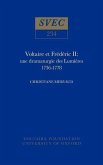This study illustrates the significance of Jean-Jacques Dortous de Mairan's networking in the spread of Enlightenment thought. It focuses primarily on the unpublished correspondence between Mairan and the Geneva scientists, Firmin Abauzit, Gabriel Cramer, Jean Jallabert and Charles Bonnet. Mairan was an assiduous correspondent whose letters reveal the progress of scientific thought in the first three quarters of the eighteenth century. Despite the high regard in which of his contemporaries, he has been, until recently, relatively neglected by Enlightenment scholars. This is the first full-length study devoted to Mairan's relations with scientists in other countries, to the process of cross-fertilisation in the production of scientific knowledge, and to his considerable influence on the development of scientific thought on key issues. The topics covered in the letters range from the Shape of the Earth and vis vivacontroversies and the medical powers of electricity, to the nature of the Seichesin the Lac du Léman and the origin of monsters. One of the major interests of the correspondence is Mairan's obvious fascination with Newton. Neglect of his contribution to the history of ideas can be partly explained by the fact that he was unfairly considered a 'last-ditch' Cartesian in a triumphantly Newtonian world. The detailed analysis of the letters in this study amply shows a constant preoccupation with both the Opticks and the Principiaand a fairly sophisticated understanding of scientific method. The letters abound in references to other scientists, such as the Bernoullis, Nollet, Dufay and Maupertuis. They provide an exciting, unguarded and 'behind-the-scenes' view of scientific developments before they were finalised and appeared in published works. It is particularly revealing, therefore, to compare the letters to Mairan's contributions to the Mémoires de l'Académie royale des sciences, his early dissertations, and his mature works. Mairan's unpublished correspondence with Geneva scientists is a treasure-house of information on personalities, ideas and controversies of crucial importance to the international scientific community from 1717 to 1769.








